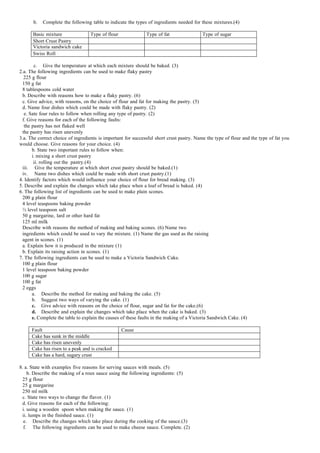This document contains typical exam questions on food and nutrition covering several topics:
1. Nutrition terms and nutrition-related problems including effects of deficiencies and excesses of proteins, fats, fiber, and more.
2. Nutritive value of foods including functions of proteins, vitamins, minerals, and dietary fiber sources.
3. Digestion and absorption processes for proteins, fats, carbohydrates, and other nutrients.
4. Dietary guidelines for active individuals, elderly, pregnant women, and more. Guidelines for meal planning, cooking, hygiene, and balanced diets.
5. Composition and value of main foods like eggs, fish, meat, dairy, cereals and







